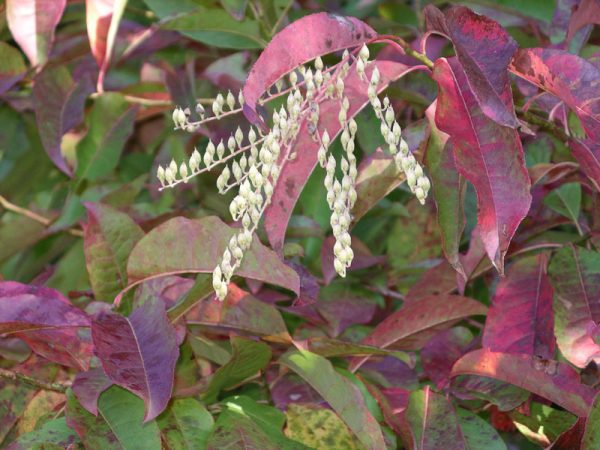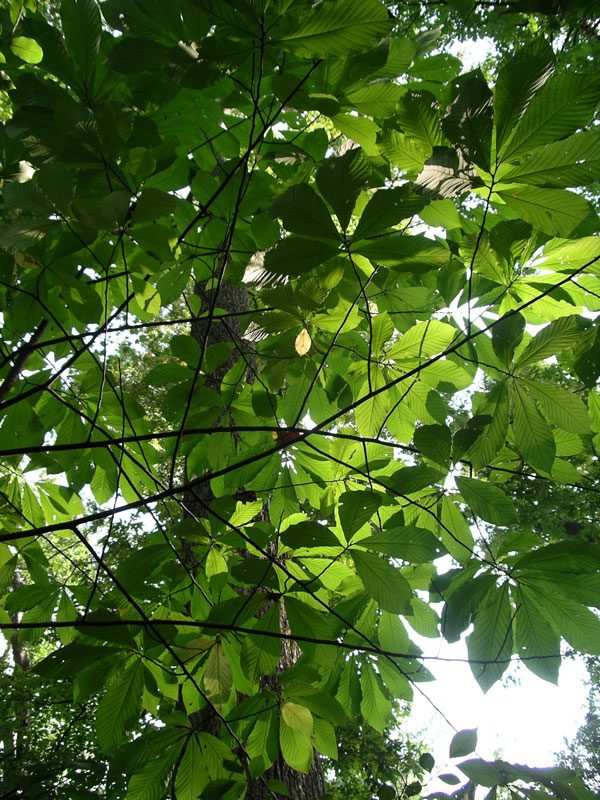The abundant diversity of the hardwood forest

At first glance, Eastern hardwood forests seem a homogenous block of green, but if you train your eye and look closer, you’ll notice subtle differences. Wild North Carolina: Discovering the Wonders of Our State’s Natural Communities helps amateur naturalists do just that. Botanist Michael Schafale describes more than two dozen unique communities, several of which apply to the Piedmont. The photographs, courtesy of ecologist David Blevins, earn this handsome book a prominent spot on any nature lover’s coffee table.
Two of my favorite trails in the Uwharries take me from one type of forest to another. I believe I was instinctively drawn to the variations in the landscape even before I was able to identify the different natural communities by name.
| For a photo gallery of Uwharrie forests by Ruth Ann Grissom click here. |
The first trail begins in a floodplain forest near the confluence of an unnamed creek and the Uwharrie River. In the heart of the Uwharries, where the land is steep, floodplains aren’t as broad or extensive as in other parts of the Piedmont. Because arable land was at a premium, much of this bottomland was cleared for agriculture. It can be difficult to find large, intact examples. Here, the floodplain is pinched between the creek and hills. In this low, flat land, the tulip poplars are straight and tall, their trunks partially hidden by sprawling beeches. Sycamores peer into the river as if to admire their mottled bark in the reflection. The understory is diverse. There’s a paw paw patch and uncommon shrubs such as bladdernut and sweet bubby.
Sadly, invasive species also thrive in floodplain forests. Seeds arrive from sites upstream and sprout in the moist and fertile soil. I cringe when I run across sprigs of privet, but I’m thankful Japanese stilt grass hasn’t taken hold in the lush, herbaceous layer.
As I walk, I also note the birds I see and hear in each community. Wood ducks, kingfishers and great blue herons live year round in the floodplain forest, but during breeding season, prothonotary warblers are the gems of this habitat. These small, yellow birds are denizens of Southern bottomlands and swamps. They flash through the foliage singing sweet, sweet, sweet, sweet, sweet.
My path curves around the base of a long, flat ridge that roughly parallels the river. To the east, the land pitches up a slope, and the community transitions to a moist hardwood forest. The scientific word for these forests is mesic, which means in-between or medium. I like to think of it as being just right. This forest is magical in spring. The beech and poplar mingle with hickory and oak. The shrub layer is dominated by painted buckeyes, but I also see an occasional viburnum. The density and diversity of spring wildflowers makes me feel as though I’m in a mountain cove. The riotous assortment includes an initial flush of trout lily, bloodroot, trillium and mayapple, with a second wave of larkspur, geranium, woodland phlox, chickweed, spiderwort and blue-star.
Migratory songbirds descend on this forest in droves, making the canopy as lush as the forest floor. As my path continues, the slope is steeper and faces due west, and the forest becomes more open. The trees are more widely spaced, and the shrub layer is dominated by isolated patches of mountain laurel. There’s a native hydrangea at the edge of a rocky drain. The wildflowers transition to species such as coreopsis, woodland aster, ginger and alumroot.
I’m also partial to a trail that begins in another mesic forest near the headwaters of a small creek. It zigzags up a northwest slope, gaining almost 500 feet of elevation in less than a mile. Serviceberry and Carolina silverbell appear among the beech trees. Farther up the mountain, they’re replaced by sourwood and a canopy dominated by hickory and oak. This is one of the dry oak forests that occur on our upland slopes. Rocky areas near the top are marked by chestnut oak. The tract was probably high-graded for shortleaf 50 to 75 years ago. The resulting gnarled and twisted hardwoods are a forester’s nightmare, but I love their odd and graceful shapes. They break at artful angles, creating snags for wildlife.
Every species of woodpecker known to the region seems to be represented on this tract. Their hammering and their rattling calls sound as dry as forest itself. The shrub layer consists primarily of knee-high patches of blueberry and deerberry. There’s also a scattering of Piedmont Indigo-bush, probably one of the best populations in the state. Often a somewhat spindly shrub, it has dainty leaves paired along its branches. They look a bit like locust seedlings. Fuzzy pink blooms typically appear in early May, but this year they were finished by the end of April. Rattlesnake plantain is my favorite wildflower in the sparse herbaceous layer. Its range seems to overlap with its reptilian namesake. That’s certainly the case on this particular mountain.
I usually prefer loop trails when I’m hiking – I like new scenery and an elusive halfway point – but I never resent turning back and retracing my steps on these trails. It gives me a different perspective on these forest transitions and an opportunity to enjoy them a second time around.
(Thanks to botanist Moni Bates for her assistance in reviewing this article.)